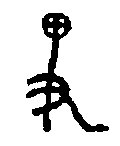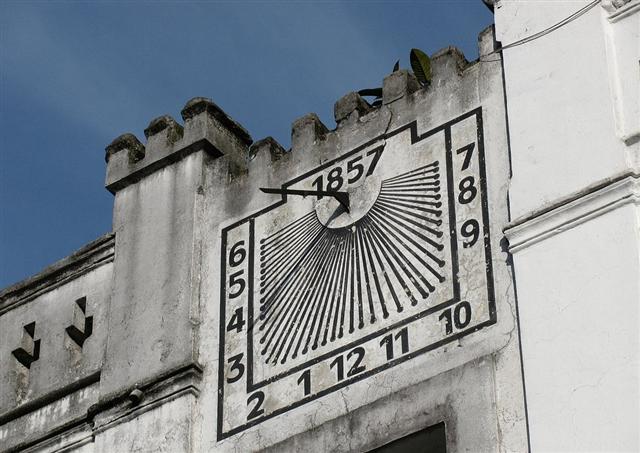Once again. ... I became curious about this star ... called Nuutuittuq [= 'never moves'] ... So, on the lee side of our uquutaq (a snow windbreak) I positioned a harpoon [vero] pointing directly at this particular star to see if it would move. In the morning I checked it and discovered that the Tukturjuit (Ursa Major) had changed their position completely but the harpoon still pointed at this star ... I had discovered the stationary star ... ... Mq.: veo, tenth month of the lunar year. Ha.: welo, a month (about April) ...  ... The most ancient of all astronomical instruments, at least in China, was the simple vertical pole. With this one could measure the length of the sun's shadow by day to determine the solstices ... and the transits of stars by night to observe the revolution of the sidereal year. It was called pei or piao, the meaning of the former being essentially a post or pillar, and the latter an indicator. Pei can be written with the bone radical ... or with the wood radical, in which case it means a shaft or handle. Ancient oracle-bone forms of the phonetic component show a hand holding what seems to be a pole with the sun behind it at the top ... so that although this component alone came to mean 'low' in general, it may perhaps have referred originally to the gnomon itself. This is after all an object low on the ground in comparison with the sun, and shows the long shadow of a low sun at the winter solstice, the moment which the Chinese always took as the beginning of the tropic year ...
(185 * 7 = 5 * 259) The long shadow cast by the Sun at winter solstice was like a long black spear (vero). But in April there was another point which could have been determined by the right ascension line where Polaris was located. In Roman times Polaris stood in front of the First Point of Aries (0h), i.e. heliacal Polaris was in 'March 20 (79) = 5 days before the Julian equinox day 84 (= 12 weeks). ... Ecclesiastically, the equinox is reckoned to be on 21 March (even though the equinox occurs, astronomically speaking, on 20 March in most years) ...
Possibly the bent outline of Gb7-24 was to indicate the right ascension place of the North Pole star in the night - curved like the crescent of the Moon. 72 * 4 = 288. 72 * 5 = 360, but 7 * 24 = 168 = 2 * 84 = 24 weeks. 7 * 25 = 80 + 95 = 350 / 2 and 7 * 26 = 182 = 364 / 2 = 432 - 250. And at the time of rongorongo the South Pole star, Dramasa, was at *320 (Februry 4) → 3-20 → 'March 20 (*364).
... |
||||||||||||||||||||||||||||||||||||||||||||||||||||||||||||||||||||||||||||||||||||||||||||||||||||||||||||||||







